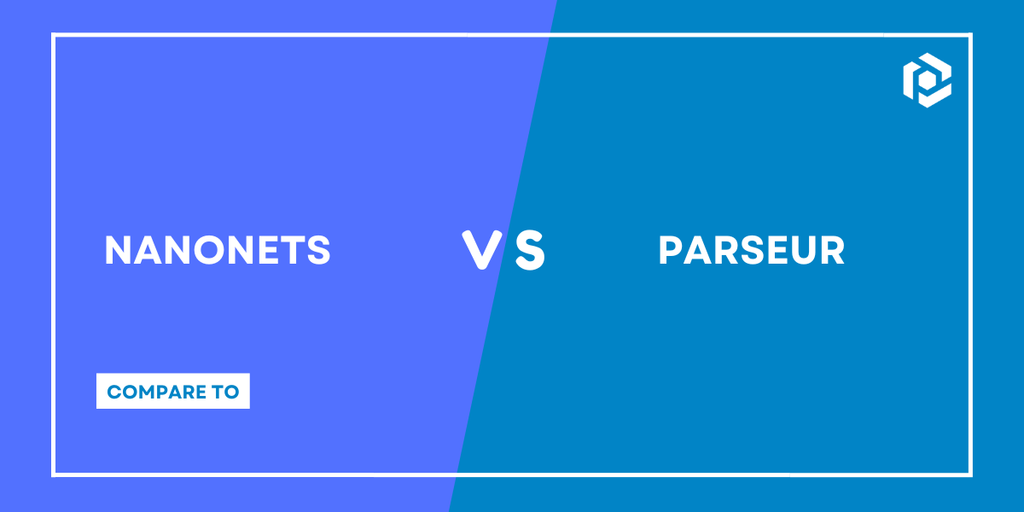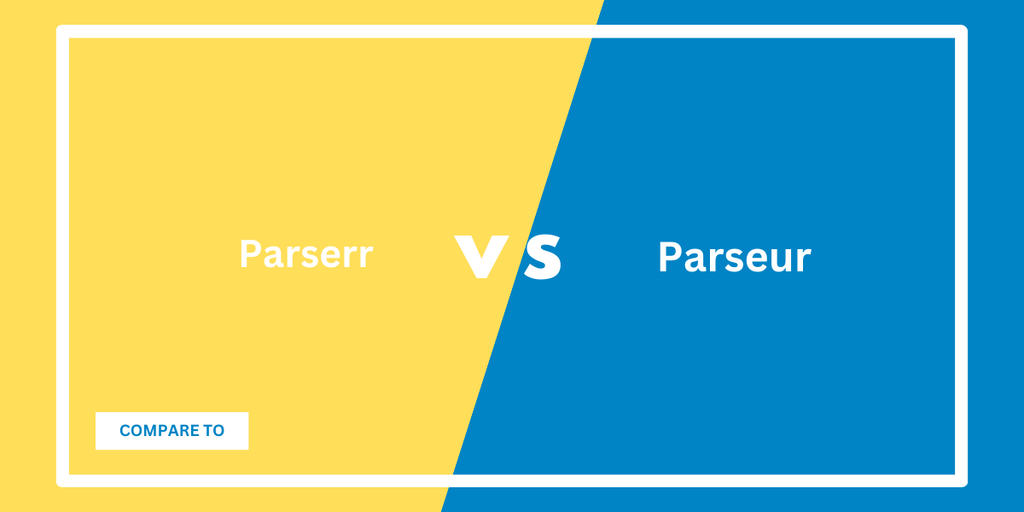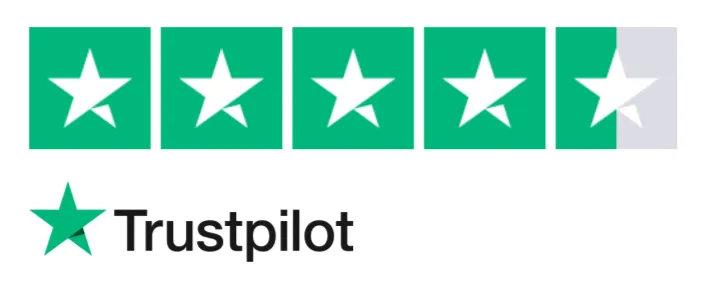Looking for the best Docparser alternative in 2026? Parseur offers fast, accurate AI data extraction, instant setup, and flexible parsing for emails, PDFs, and documents, without the limitations of template-only tools.
Key Takeaways:
- Docparser relies on manual templates, which can limit automation for teams dealing with variable document layouts, unless you have Multi-layout support which is on their higher plans only.
- Parseur offers AI-powered extraction and flexible templates, giving you faster setup and more reliable results, with almost all features being available to all users.
- As you plan your automation strategy for 2026 and beyond, Parseur offers a more flexible, user-friendly option than Docparser, helping your team work faster with less effort.
If you’re searching for a Docparser alternative that’s faster, more flexible, and easier to manage, you’re in the right place. While Docparser has helped many teams automate PDF and email parsing, its rules-only workflow can feel restrictive, especially when documents vary, volume increases, or more dynamic, AI-powered extraction is required.
Parseur solves these challenges out of the box.
With Parseur, you get smart AI parsing, and instant setup, no technical expertise required. Our platform adapts to your documents, handles layout variations effortlessly, and delivers consistent, accurate results every time. Whether you're processing invoices, receipts, emails, real estate documents, or industry-specific forms, Parseur simplifies the entire workflow, so your team can automate more and manually correct less.
Parseur Vs Docparser: Comparison Table
We've summarized the differences between Parseur and Docparser in the table below before we go into more detail.
 Docparser |
 Parseur |
|
|---|---|---|
| Engine | AI-based Rule-based |
AI-based Template-based |
| AI | Available on paid plans only | Available on all plans |
| Multi-layout support | Yes, with rules | Yes, automatic |
| Metadata parsing | Yes, with rules | Yes, automatic |
| Table parsing | Yes, with rules | Yes, automatic |
| Ready-made field sets | Yes | Yes |
| Automatic parsing | Some | Yes, AI + hundreds of templates supported |
| Email parsing | Yes | Yes |
| Files supported | PDF Microsoft Word Text Images Spreadsheets |
PDF Microsoft Word Spreadsheet HTML Text RTF Images |
| Integrations | XLS, CSV, JSON, XML File Download Webhook Zapier Google Sheets Power Automate Make |
Download Webhook Zapier Google Sheets Power Automate Make n8n |
| API | Yes | Yes |
| Free plan | 50 credits on 14-day trial Limited to 15 parsers |
Yes, with all features |
What is a PDF parser?
In simple terms, a PDF parsing software extracts data from PDFs. It automates the data extraction from documents and the parsed data can either be downloaded or exported to another application.
Some PDF parsers require coding knowledge while others are no-code tools.
PDFs come in different layouts and formats such as scanned PDFs or images. Manual extraction can be time-consuming and tedious, especially if you have hundreds of documents to go through.
A PDF parsing tool helps businesses create an automated workflow and thus, save time and money.
How does Docparser work?
Docparser, founded in 2017 and part of the same product family as Mailparser, is a rule-based document parsing tool that relies on Zonal OCR and keyword anchors to extract data. Users create parsing rules such as zones, filters, and pattern matches to tell the system exactly where and how to capture information from each document type.
While this rule-based approach works for consistent, structured layouts, it can require ongoing maintenance whenever document formats change, making it less flexible than a modern AI-powered approach.
Compare Parseur with Mailparser
Automatic Layout Parsing
Docparser provides users with 50 credits on its 14-day free trial, making it easy to get started at no initial cost. The interface is designed to be intuitive, allowing users to select from a library of ready-made templates based on their specific use case. Once a template is chosen, users simply upload their documents and Docparser extracts data using predefined fields tailored to that document type. For added flexibility, users can define new rules to capture additional fields as needed.
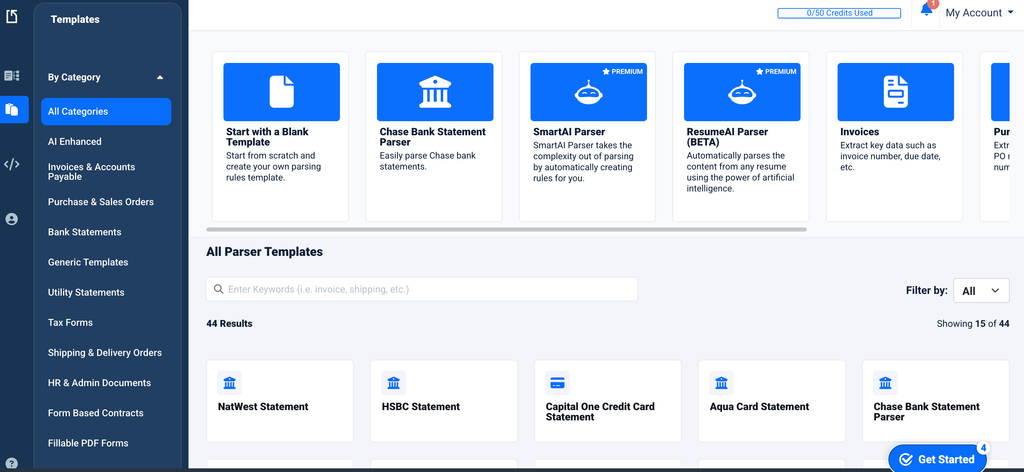
However, to download the parsed data, users must answer several onboarding questions, such as specifying their industry. While this step helps Docparser tailor its offering, some users may find it time-consuming and a potential barrier to a seamless experience.
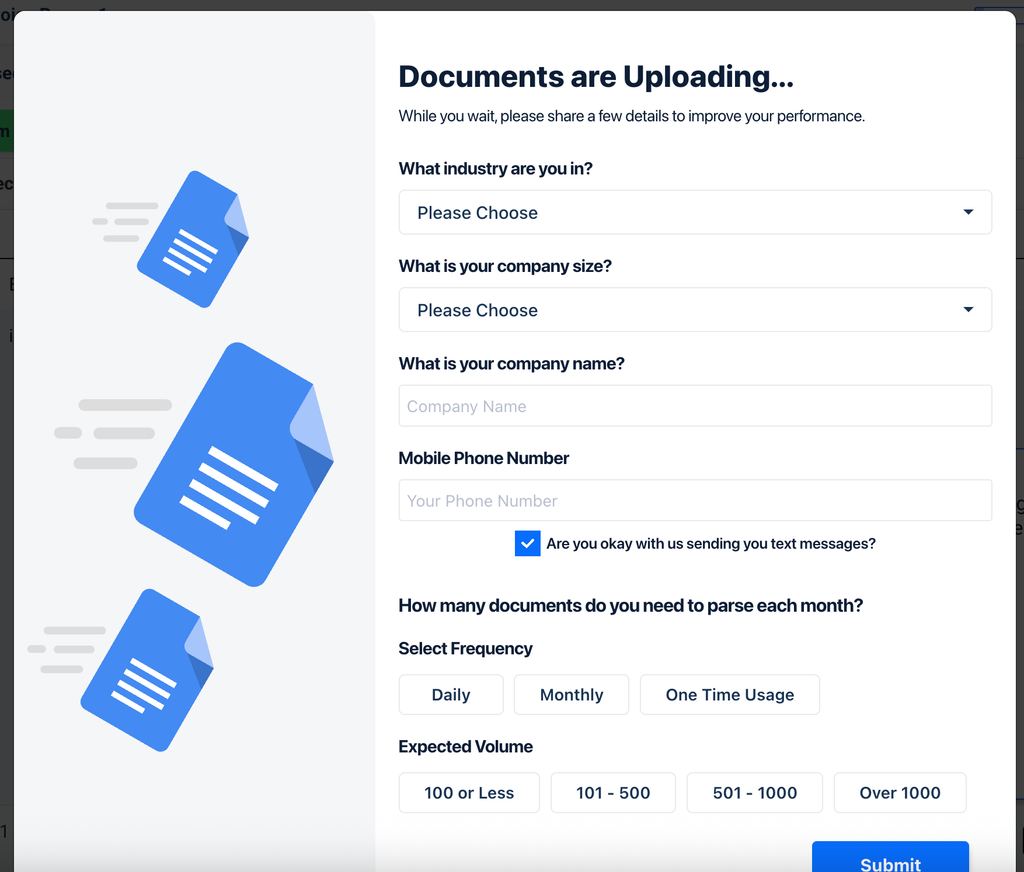
It’s also important to note that access to AI-powered parsing features is restricted to premium plans; these advanced capabilities are not available on the free plan, limiting options for users looking to leverage AI-driven document extraction without upgrading.
Features of Docparser
Besides the two key features highlighted above, Docparser has other features, such as:
- Smart filters for invoice processing
- Advanced image pre-processing
- Built-in barcode and QR code scanning
- Integration with hundreds of cloud applications
Docparser continues to offer a solid set of rule‑based extraction features, including smart filters for invoice processing, advanced image pre‑processing, built‑in barcode/QR code scanning, and integrations with hundreds of cloud apps.
Customization can also be limited in scenarios involving inconsistent layouts or complex splitting/searching requirements. Additionally, some plans have restrictions: for example, early tiers restrict the number of parsers you can create, which can be a bottleneck for teams handling many document types.
Docparser Pricing
Docparser offers three main pricing tiers to accommodate different business needs:
- Starter: $32.50 per month, which includes 100 parsing credits.
- Professional: $61.50 per month, providing 250 parsing credits.
- Business: $133 per month, offering 1,000 parsing credits.
Each tier scales up in both price and parsing capacity, allowing users to select the plan that best matches their document processing volume.
Parseur: A Docparser Alternative
Parseur is a powerful PDF parsing tool with a robust AI engine that automates manual data entry extraction from documents and emails.
Quick setup with zero learning curve
Parseur is designed with simplicity in mind, ensuring that you can get up and running in no time. Our platform provides an intuitive setup that doesn't require any technical expertise. Just create your free account, choose the AI-assisted mailbox and documents will be processed automatically.
AI-Driven Document Processing
Parseur combines powerful AI extraction with flexible template options, giving you the best of both worlds. Our AI parser instantly understands the structure of your documents, with no training, setup, or technical expertise required. And when you need added precision, you can layer in custom templates to guide the parser for highly specialized workflows.
Efficient document processing
The data parsing tool also provides the option to create custom templates for specific use cases.
Whether you rely on AI, templates, or a mix of both, Parseur adapts to your documents, not the other way around.
Excellent customer support
Our support team is responsive and dedicated to helping you resolve any questions or issues promptly. We believe in building strong relationships with our users, ensuring you have the assistance you need every step of the way. Your feedback is important to us, and we continuously strive to improve your experience based on your insights.
Integrations with Zapier, Power Automate, Make
Parseur has native integrations with Zapier, Make (formerly Integromat), and Power Automate (formerly Microsoft Flow) to ensure seamless workflows between applications.
With those integrations, you can easily send data to different tools from the Parseur app directly.
Parseur has pre-made Zaps with Zapier and templates with Power Automate.
You can also download your data as CSV, JSON, Excel, or use Webhook to send data in real-time.
Other Parseur highlights
Email parsing: Parseur is also an email parser that extracts text and data from email messages. This can be useful for extracting data from customer inquiries or orders.
Data normalization: Normalize addresses and numbers using different meta fields.
Advanced post-processing: Write Python code for advanced manipulations.
Metadata parsing: Metadata, such as 'From', 'To', 'CC', 'BCC' fields, are easily parsed as well.
Chat support: Our team is here to support you in case you have questions, or if any issue arises.
API access: Use Parseur’s REST API to upload documents, retrieve structured data, and integrate with CRM, ERP, or custom systems for automated workflows.
Switched From: mailparser.io and Docparser
Reasons for Switching to Parseur: I was struggling to make some things work, and the support folk, though responsive and friendly, were not able to offer me a solution.
- Brett L. , CameraStuff
Why Parseur is the Smart Docparser Alternative for 2026
For teams looking to automate document and email parsing in 2026, Parseur stands out as a modern, AI-powered alternative to Docparser. With instant setup, flexible AI-assisted templates, seamless integrations, and strong API access, Parseur handles diverse document types with minimal effort. Its combination of speed, accuracy, and ease of use makes it ideal for businesses that want to scale document automation without getting bogged down by manual rule creation, complex layouts, or extensive training requirements.
Frequently Asked Questions
Here are some common questions about using Parseur as a Docparser alternative.
-
What types of documents can Parseur handle?
-
Parseur can process PDFs, Word documents, emails, spreadsheets, HTML, RTF, and text files. It can handle structured, semi-structured, and even unstructured layouts.
-
How does Parseur handle table data?
-
Parseur supports dynamic table extraction using start/end labels, allowing you to capture structured tables quickly and accurately.
-
Does Parseur integrate with other apps?
-
Yes. Parseur integrates with Zapier, Make, and Power Automate and n8n, and also provides API access for custom workflows and real-time data transfer.
-
Is Parseur suitable for high-volume document processing?
-
Absolutely. Parseur scales with your business, offering unlimited mailboxes, high-volume plans, and cost-effective per-page pricing.
Last updated on


